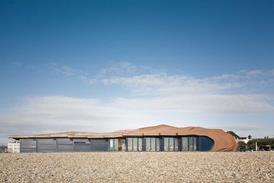Defra and ODPM unsure of how to introduce minimum efficiency standards
The government is planning to bring in wide-ranging water efficiency standards for houses, but is unclear which department will oversee the change.
The ODPM revealed last week that plans are afoot to bring in minimum standards for water efficiency in 2006. The new standards will be part of a revised Code for Sustainable Homes with tougher energy efficiency standards.
The move came as over 5.5m people in London and Kent were preparing for upcoming hosepipe bans by companies including Thames Water, Southern Water and South East Water.
Industry experts predict the water situation in the Southeast will worsen as development in the Thames Gateway boosts the capital's population by 800,000 over the next 10 years.
Experts have questioned whether the new efficiency standards should form part of ODPM building regulations or the Department for Environment, Farming and Rural Affairs' (Defra) water fittings directives.
Jacob Tompkins, director of Waterwise, a non-governmental body to promote water efficiency, said standards about water fittings would not fit well in changes to Building Regulations. "The water efficiency bit doesn't fit well within Part G, which is all about hygiene. Unless they renamed it and completely rewrote it," he said.
But if the water fittings standards were put in an updated version of Defra's water supply regulations from 1999 they would cover all buildings, leaving millions across the UK to come up to standard. While most new buildings are fitted with six-litre flush toilets, over 23m UK homes have toilets with 12-litre flush toilets or larger.
The water efficiency bit doesn’t fit well within Part G, which is all about hygiene
Jacob Tompkins, director, Waterwise
The ODPM and Defra will launch a consultation later this year to work out how best to bring in minimum water efficiency standards.
These could force builders to install water efficient fittings like dual-flush toilets, spray taps and low-volume showers. A Defra spokesperson said the two departments are working closely to make sure construction is not left confused by conflicting documents.
Meanwhile, there is also the danger that water efficiency standards could become embroiled in planning policy. Minimum standards would give councils where water leakage is worst the scope to create water efficiency criteria in local planning documents.
This would leave building professionals to deal with conflicts between building regulations and planning policy, and standards that change between counties.
Last month, environment minister Elliot Morley visited an Essex and Suffolk Water project to test water efficiency by fitting half of homes in a development with conventional fittings and the other half with water-saving fittings. The experiment showed water efficient fittings can save up to 13% water per person, including other results.
Dual- flush toilets used 10%less water per person than standard 7.5 litre flush toilets
Basin taps in the water efficient homes used 31% less water per person than those in the control houses
Water efficient shower and bath fittings used 10% less water per person than their conventional counterparts
Defra spokesperson Beverley Parr said although installing water-saving fittings could cost around £50 more than standard fittings, the amount of water they save means they would begin paying for themselves after the first year
Source
QS News




















No comments yet